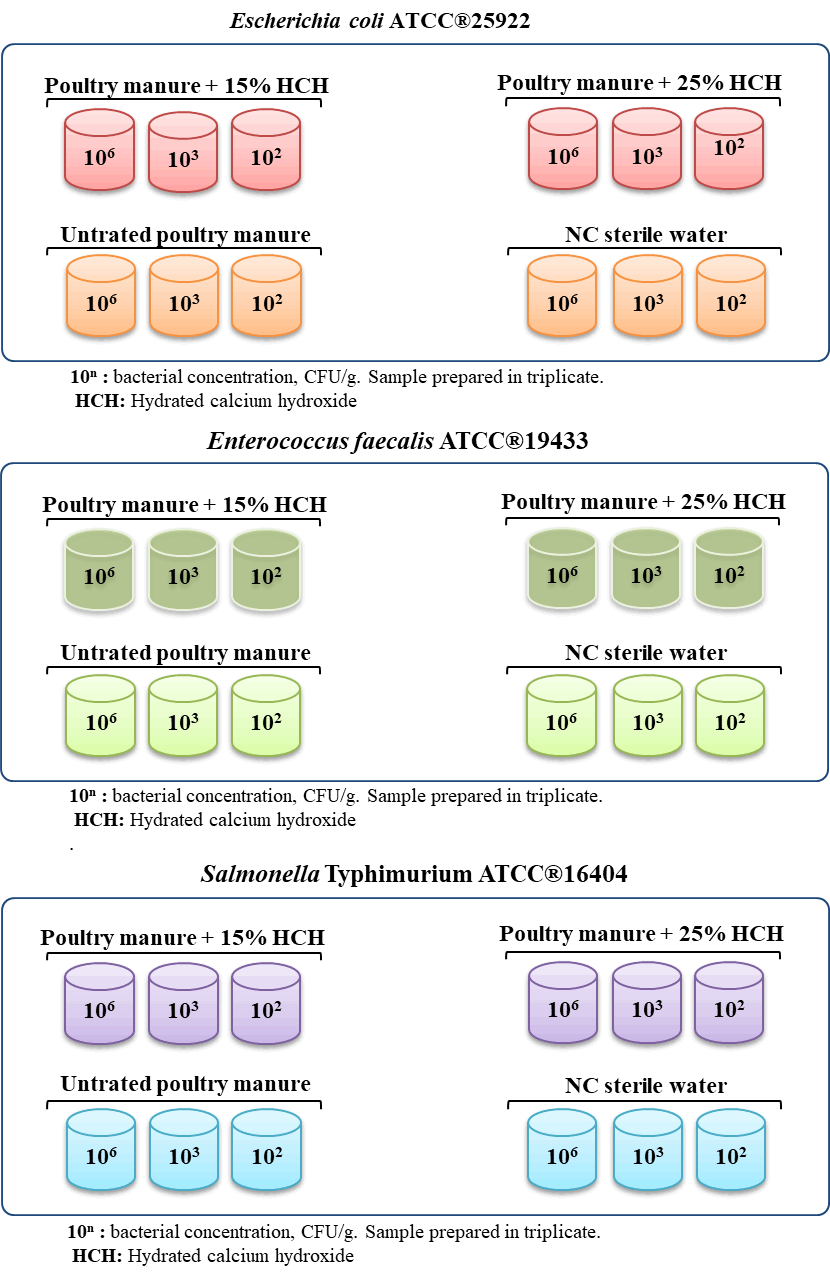Survival of Salmonella Typhimurium, Escherichia coli, and Enterococcus faecalis in poultry manure samples, treated with different concentrations of hydrated calcium hydroxide
Abstract
The aim of the study was to verify the quality and microbiological safety of poultry manure, a completely natural fertilizer, composed of the manure of hens, poultry, and other birds. The evaluation of the quality and safety of poultry manure was performed following a bactericidal treatment, using different percentages of hydrated calcium hydroxide, inhibiting the growth, proliferation, and survival of bacterial species that can be pathogenic for humans. The evaluations were conducted spiking known concentrations of Salmonella spp., Escherichia coli, and Enterococcus spp. Following the contamination, qualitative and quantitative analysis for the research of the above-mentioned pathogens were performed. In parallel, the variations of pH and humidity in the samples under examination were verified. The experiments consisted on adding different concentrations of hydrated calcium hydroxide, with a percentage ranging from 15% to 25%, followed by the qualitative and quantitative research of the pathogenic microorganisms spiked in increasing ten-fold concentrations (102, 103, 106 CFU/g). The total reduction of the microbial load in a period of time that varies from a few hours to a few days, depending on the microorganism under consideration, was observed.
Downloads





